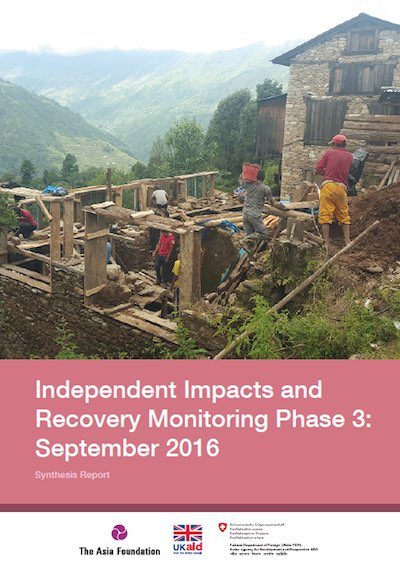Aid and Recovery in Post-Earthquake Nepal: Synthesis Report (Phase 3)
Eighteen months from the earthquakes that hit Nepal in April and May 2015, the third wave of the Independent Impacts and Recovery Monitoring project (IRM) tracks the extent to which people have recovered, what coping strategies they are using and how effective they are, how aid is helping and which groups are being left behind. IRM involves both large-scale quantitative surveys and in-depth qualitative fieldwork. This report provides data and findings from the third quantitative survey. The monitoring focuses on five key areas: aid delivery and effectiveness; politics and leadership; social relations and conflict; protection and vulnerability; and economy and livelihoods.
IRM is longitudinal, conducted at six month intervals over the course of two years. The fielding of the first wave was carried out six weeks after the earthquake, and the second wave in March 2016. Detailed findings from the quantitative survey and qualitative field research from both rounds, as well as a thematic study on reconstruction cash grants, can be found here.
The three reports from this round are products of methodologically robust ground research which follows up on how aid has impacted lives in affected areas and how people cope with immediate and long term challenges. By shedding light on the evolving situation on the ground, the IRM project aims to contribute to effective and sustainable recovery plans. The links below contain: the quantitative survey; qualitative field monitoring; and executive summaries of all reports.

